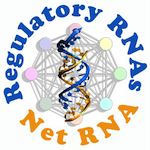By studying fundamental mechanisms controlling RNA degradation, researchers from IBMP identified DCP1-associated NYN domain endoribonuclease 1 (DNE1), an endoribonuclease of hitherto unknown function. This protein is highly conserved from basal algae to flowering plants, suggesting an important function in the plant kingdom.
DNE1 is sharing the localization of proteins important for messenger RNA (mRNA) decapping, the removal of a protective modified nucleotide present in the 5’ extremity of mRNAs. The functional study of DNE1 indicates that DNE1 participates to a protein complex acting in parallel of the decapping complex and targeting mRNAs. By observing plants combining mutations in DNE1 and decapping proteins, the researchers identified defects in the regularity of flower emergence, also known as phyllotaxis. A detailed study of these defects showed that DNE1 and the decapping complex have a redundant function necessary for phyllotactic pattern formation during floral meristem growth.
This study led by Damien Garcia was published in Plant Physiology. It results from the close collaboration between the RNA degradation Lab (IBMP) and the Proteomic Platform Strasbourg-Esplanade (IBMC). It identifies a novel mRNA degradation pathway in plants, and reveals its importance for plant development.














